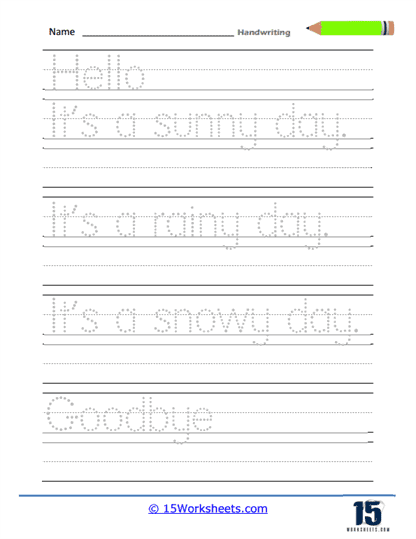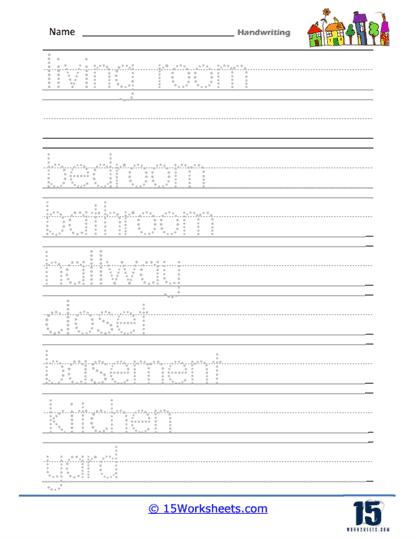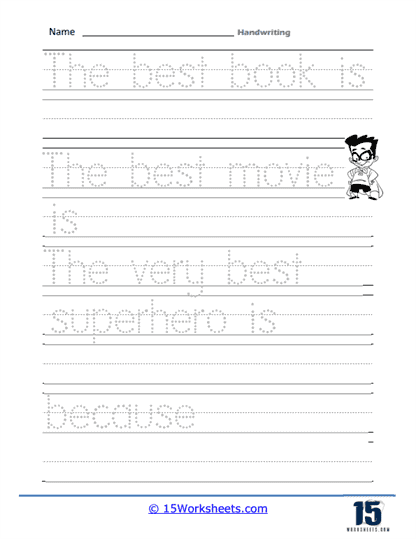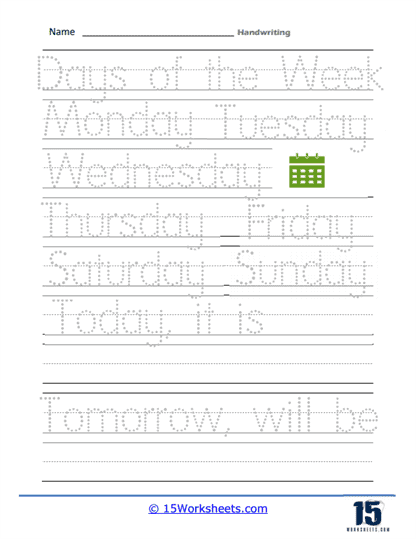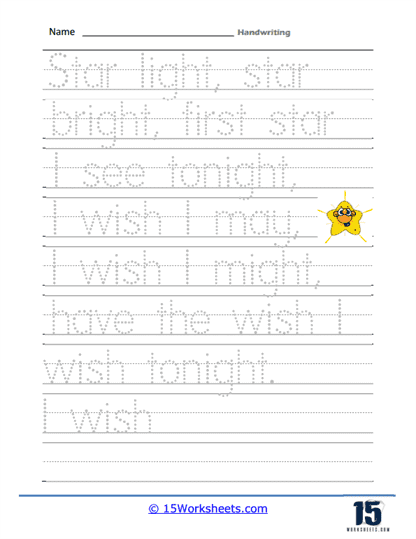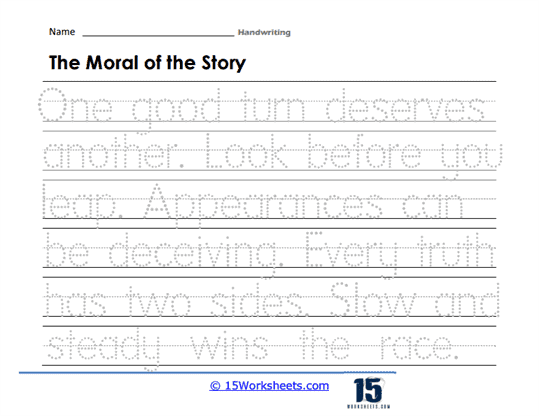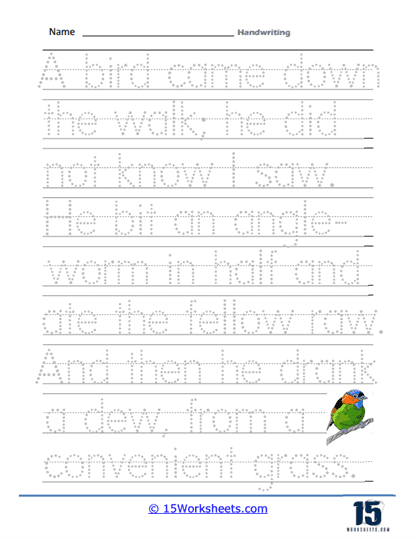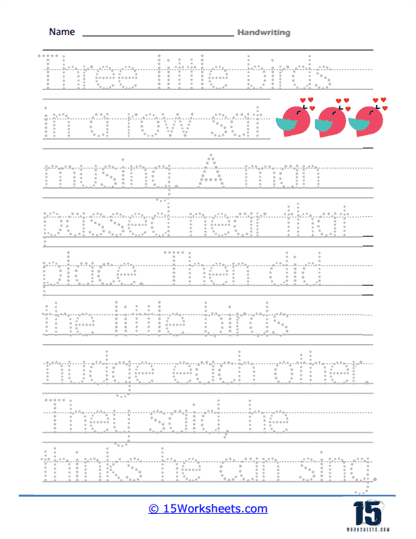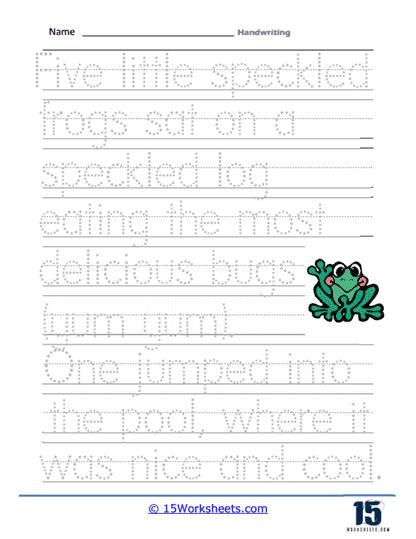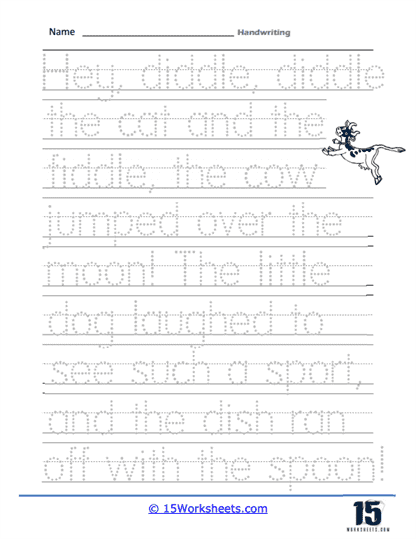Penmanship Worksheets
All About These 15 Worksheets
This collection of 15 Penmanship worksheets is a comprehensive set meticulously designed to enhance a student’s handwriting through the practice of tracing sentennces. Each worksheet is thematically tailored to engage students with various topics while providing the structure needed for practicing legible handwriting. From seasonal changes to household vocabulary, the subjects of these worksheets are chosen to be relevant and interesting to the young learners, thereby fostering a natural desire to engage with the practice.
Upon examination of each worksheet, there is a consistent layout that features dotted lines for students to trace. These dotted lines act as guides, meticulously demonstrating the shape and flow of each letter and word. The act of tracing aids in building muscle memory, ensuring that the movements required for each letter become second nature to the student. Over time, this muscle memory translates to improved penmanship, even without the guides present.
Let’s delve into the specifics of each worksheet to understand the variety and depth of this collection:
- Seasonal Changes: The worksheet with phrases about spring, for example, not only helps students learn the form of letters but also educates them on the cycle of seasons. Illustrations accompanying the text serve as visual aids, solidifying the connection between the word and its meaning.
- Narrative Structure: The worksheets featuring simple stories about animals, like the frog and the cow, offer an engaging way to practice handwriting. The narrative structure helps students focus longer and provides context, making the learning process more memorable.
- Vocabulary Development: Some worksheets focus on particular sets of vocabulary, such as the names of different birds or rooms in a house. This not only improves writing skills but also expands the student’s lexicon in a practical and visually engaging manner.
- Personal Connection: Worksheets with phrases like “My name is” or “My favorite color is” allow for personalization, which can increase a student’s investment in the handwriting task. These worksheets encourage students to share information about themselves, making the exercise feel more like a personal project than a routine assignment.
- Temporal Awareness: With worksheets centered on days of the week and times of the year, students not only practice their handwriting but also become more temporally aware, understanding the order and progression of days and seasons.
- Repetition for Mastery: Certain worksheets use repetition of phrases, such as “wish upon a star,” to allow students to focus on mastering the form and connection of letters through repeated practice. This is crucial for building the automaticity needed for fluent cursive writing.
- Thematic Learning: Worksheets that include themed sentences, like those about summer, tap into a student’s existing knowledge and interest, making the practice more relatable and effective.
- Moral and Message: Some sheets with phrases like “The moral of the story” encourage students to think deeper about the meaning behind words and stories. This reflective aspect of handwriting practice can lead to a richer educational experience.
- Illustrations for Engagement: Every worksheet in the collection features illustrations that are pertinent to the content. These images are not mere decorations but act as cognitive hooks that help students remember the words they are practicing.
How Do Penmanship Worksheets Benefit Students?
The benefits of these worksheets extend beyond just improved handwriting. They aid in the development of fine motor skills, which are crucial for many other areas of learning and everyday life. Good penmanship also plays a significant role in boosting self-esteem and academic performance. Clear and legible handwriting is often associated with greater academic diligence and can affect the way a student’s work is perceived by educators and peers alike.
Practicing penmanship is important for several reasons:
- Cognitive Development: The process of handwriting promotes cognitive development. It engages the brain in deep thinking and encourages the learner to concentrate on the task at hand, aiding in focus and thought organization.
- Motor Skills Enhancement: Handwriting requires and develops fine motor skills. Through the act of writing, students enhance their hand-eye coordination and dexterity.
- Memory Retention: The kinesthetic activity involved in handwriting has been shown to improve memory retention. When students write down information, they are more likely to remember it compared to typing the same information.
- Reading Skills: Good handwriting has a reciprocal relationship with reading skills. As students become more familiar with the formation of letters and words, their ability to read and comprehend text also improves.
- Academic Performance: Research suggests that students with good handwriting may receive higher grades due to the increased legibility of their written work. This can have a long-lasting impact on academic confidence and success.
In summary, this collection of 15 Penmanship worksheets serves as a robust tool for educators and students alike. The variety offered ensures that students remain engaged, the dotted lines provide essential guidance, and the themes ensure that the exercises are enjoyable and meaningful. The importance of penmanship in developing a range of cognitive and motor skills cannot be overstated, making this collection a valuable asset in any elementary educational curriculum.

